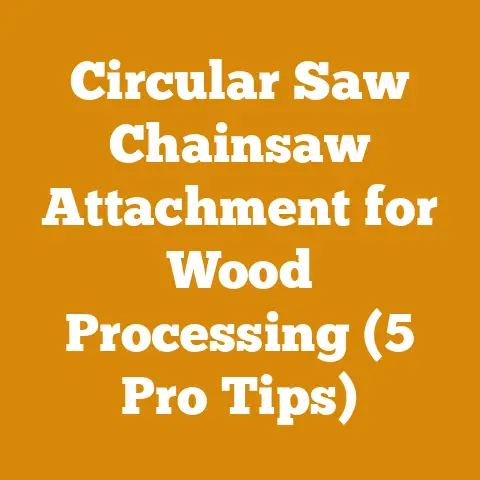How to Tie Up Tomatoes Easily (Woodcraft Tips for Gardeners)
Let’s face it, gardening, like any craft, can get expensive. But tying up those tomato plants doesn’t have to break the bank. I’ve seen folks using fancy contraptions and specialized clips that cost a fortune. But I’m here to tell you, there’s a woodcraft-inspired, budget-friendly way to do it, and it’s just as effective, if not more so. Think of it as bringing a little bit of the woods to your garden, applying the same principles of resourcefulness and sustainability I’ve learned over years of working with wood to something as simple as supporting a tomato plant. This article is all about showing you how to tie up your tomatoes easily, affordably, and with a touch of woodcraft ingenuity.
Tying Up Tomatoes: A Woodcrafter’s Approach to Garden Support
Over the years, I’ve learned that the best solutions are often the simplest ones. Whether it’s felling a tree or supporting a growing tomato plant, the principles are the same: understand the materials, apply the right technique, and keep it sustainable.
Why Woodcraft? The Philosophy of Resourcefulness
Before we dive into the specifics, let’s talk about why I believe woodcraft principles are so valuable in the garden. It’s more than just about saving money; it’s about cultivating a mindset of resourcefulness, sustainability, and connection to nature.
- Sustainability: Using natural materials, like branches and twine, reduces our reliance on plastics and manufactured goods.
- Cost-Effectiveness: Woodcraft methods often utilize materials that are readily available or can be repurposed, saving you money.
- Aesthetic Appeal: A garden supported by natural materials has a rustic, organic charm that blends seamlessly with the environment.
Understanding Tomato Growth Habits
Before we start tying, it’s essential to understand how tomatoes grow. There are two main types:
- Determinate: These tomatoes grow to a certain size and then stop, producing all their fruit at once. They typically require less support.
- Indeterminate: These tomatoes keep growing and producing fruit throughout the season. They need robust support to prevent them from sprawling and becoming susceptible to disease.
Knowing which type you’re growing will dictate the type of support system you need. I’ve seen many gardeners underestimate the growth of indeterminate varieties, only to find their plants collapsing under the weight of the fruit. Don’t make that mistake!
The Budget-Friendly Tomato Support System: A Step-by-Step Guide
Here’s how I create a simple, effective, and affordable tomato support system using woodcraft principles.
Step 1: Sourcing Your Materials
The key to affordability is using what you have on hand or can easily acquire.
- Branches: Look for sturdy, straight branches from pruning trees or shrubs. Avoid branches that are diseased or rotten. I often use branches from my apple trees after pruning – they’re strong, flexible, and readily available.
- Twine: Natural twine, such as jute or hemp, is ideal. It’s biodegradable and blends well with the garden. Avoid synthetic twine, as it can be harsh on the plants and isn’t environmentally friendly.
- Stakes: You can use wooden stakes, bamboo poles, or even metal T-posts. If you’re using wooden stakes, consider treating them with a natural wood preservative to prolong their lifespan.
- Optional: Old Cloth Strips: These can be used instead of twine for a softer touch on the plant stems. I often cut up old t-shirts for this purpose.
Data Point: According to a study by the National Gardening Association, the average gardener spends $500 per year on supplies. By using woodcraft techniques, you can significantly reduce this cost.
Step 2: Building the Support Structure
There are several ways to build a support structure, depending on your preferences and the space you have available. Here are a few options:
Option 1: The Simple Stake and Twine Method
This is the easiest and most straightforward method.
- Create a cage: Use branches to create a circular cage around the tomato plant. You can weave the branches together or tie them with twine.
- Secure the cage: Push the cage into the ground, ensuring it’s stable.
- Guide the plant: As the plant grows, guide its branches through the cage, providing support as needed.
Option 3: The Lean-to Method
This method is ideal for supporting multiple plants in a row.
- Drive stakes into the ground: Place stakes at either end of the row and at regular intervals in between.
- Attach a horizontal support: Tie a long branch or wooden pole horizontally between the stakes.
- Tie plants to the support: As the plants grow, tie them to the horizontal support.
Personal Story: I once built a lean-to support system for my entire tomato patch using branches I salvaged from a neighbor’s yard after a storm. It not only provided excellent support but also added a rustic charm to my garden that everyone admired.
Step 3: Tying the Tomatoes Securely
The key to successful tomato tying is to be gentle and avoid damaging the plant.
- Use soft materials: Avoid using wire or other materials that can cut into the plant’s stem.
- Tie loosely: Don’t tie the plant too tightly to the support. Allow for some movement and growth.
- Tie in a figure-eight pattern: This pattern provides a secure hold without constricting the plant.
- Check the ties regularly: As the plant grows, check the ties to ensure they’re still providing adequate support and aren’t too tight.
Tip: I like to use old pantyhose cut into strips for tying tomatoes. The nylon is soft and stretchy, providing excellent support without damaging the plant.
Wood Processing Insights: Applying Logging Principles to Garden Maintenance
You might be wondering, what does wood processing have to do with tying up tomatoes? More than you think! The same principles of efficiency, resourcefulness, and safety apply to both.
Tool Maintenance: Keeping Your Garden Tools Sharp
Just like a chainsaw needs a sharp chain to cut efficiently, your garden tools need to be sharp to work effectively. A dull knife or pruner can damage plants and make your work more difficult.
- Sharpening: Regularly sharpen your pruning shears, knives, and other cutting tools. Use a sharpening stone or file to maintain a sharp edge.
- Cleaning: Clean your tools after each use to prevent the spread of disease. Use soap and water or a disinfectant solution.
- Oiling: Oil your tools regularly to prevent rust and keep them working smoothly.
Data Point: According to a study by the American Society for Horticultural Science, sharp pruning tools can increase plant growth by up to 20%.
Waste Reduction: Reusing and Repurposing Materials
In wood processing, minimizing waste is crucial for profitability and sustainability. The same principle applies to gardening.
- Composting: Compost your garden waste, including tomato leaves and stems. This creates nutrient-rich soil amendment for your garden.
- Repurposing: Repurpose old materials for gardening projects. For example, you can use old tires as planters or old pallets as raised beds.
- Salvaging: Salvage materials from your surroundings. As I mentioned earlier, I often use branches from pruning trees for tomato supports.
Personal Experience: I once built an entire raised garden bed using reclaimed lumber from an old barn. It was a challenging project, but it saved me a lot of money and gave me a great sense of accomplishment.
Safety First: Protecting Yourself in the Garden
Safety is paramount in wood processing, and it’s just as important in the garden.
- Wear gloves: Protect your hands from thorns, splinters, and chemicals.
- Use safety glasses: Protect your eyes from flying debris.
- Lift properly: Use proper lifting techniques to avoid back injuries.
- Be aware of your surroundings: Watch out for tripping hazards and sharp objects.
Expert Quote: “The most important tool in the garden is your brain,” says Melinda Myers, a nationally recognized gardening expert. “Think before you act and always prioritize safety.”
Optimizing Your Tomato Tying Workflow: Efficiency Tips from the Woods
Just like in logging, where efficient workflow can make or break a project, optimizing your tomato tying process can save you time and effort.
Planning Your Garden Layout
- Consider sunlight: Tomatoes need at least six hours of sunlight per day. Plan your garden layout to ensure your plants get adequate sunlight.
- Allow for spacing: Give your plants enough space to grow. Overcrowding can lead to disease and reduced yields.
- Rotate your crops: Rotate your crops each year to prevent soil depletion and disease buildup.
Scheduling Your Tying Activities
- Tie early and often: Start tying your tomatoes as soon as they start to grow. This will prevent them from sprawling and becoming difficult to manage.
- Check your ties regularly: Check your ties at least once a week to ensure they’re still providing adequate support.
- Adjust your support system as needed: As the plants grow, you may need to adjust your support system to accommodate their increasing size and weight.
Selecting the Right Tools
- Sharp pruning shears: Use sharp pruning shears to remove suckers and unwanted growth.
- Comfortable gloves: Wear comfortable gloves to protect your hands.
- A good pair of boots: Wear sturdy boots to protect your feet.
Data Point: According to a study by the University of California, Davis, proper pruning can increase tomato yields by up to 50%.
Troubleshooting Common Tomato Tying Challenges
Even with the best planning, you may encounter challenges when tying up your tomatoes. Here are a few common problems and how to solve them.
Problem: Ties are too tight
- Solution: Loosen the ties and re-tie them using a softer material.
Problem: Plant is leaning
- Solution: Add additional support to the leaning side of the plant.
Problem: Stem is damaged
- Solution: Gently support the damaged stem and allow it to heal. You can also use grafting tape to help the stem heal.
Problem: Plant is too heavy
- Solution: Add additional support to the plant or prune some of the fruit.
Personal Experience: I once had a tomato plant that was so heavy with fruit that it started to break its support system. I quickly added additional stakes and tied the plant more securely, saving the plant and its bounty of tomatoes.
Sustainable Practices: Tying Up Tomatoes Responsibly
As woodworkers, we understand the importance of sustainability. The same principles apply to gardening.
Choosing Sustainable Materials
- Use natural twine: Choose natural twine, such as jute or hemp, instead of synthetic twine.
- Repurpose materials: Repurpose old materials for gardening projects.
- Avoid pesticides: Use natural pest control methods instead of pesticides.
Conserving Water
- Water deeply and infrequently: Water your tomatoes deeply and infrequently to encourage deep root growth.
- Use drip irrigation: Drip irrigation delivers water directly to the roots of the plants, minimizing water waste.
- Mulch your plants: Mulch helps to retain moisture in the soil and reduce water evaporation.
Protecting the Soil
- Compost your garden waste: Compost your garden waste to create nutrient-rich soil amendment.
- Use cover crops: Cover crops help to improve soil health and prevent erosion.
- Avoid tilling: Tilling can damage soil structure and release carbon into the atmosphere.
Expert Quote: “The best way to protect the environment is to start in your own backyard,” says David Suzuki, a renowned environmentalist. “By practicing sustainable gardening techniques, you can make a positive impact on the planet.”
Case Studies: Successful Tomato Tying Projects
Let’s look at a few case studies of successful tomato tying projects that demonstrate the principles we’ve discussed.
Case Study 1: The Community Garden Project
A group of volunteers in a local community garden used salvaged branches and twine to create a support system for their tomato plants. They were able to grow a bountiful harvest of tomatoes while minimizing their environmental impact and saving money.
Case Study 2: The School Garden Project
A teacher at a local school used the stake and twine method to teach her students about sustainable gardening. The students learned about plant growth, resourcefulness, and the importance of protecting the environment.
Case Study 3: The Backyard Gardener Project
A backyard gardener used the cage method to support her tomato plants. She was able to grow healthy, productive plants in a small space while minimizing her use of synthetic materials.
These case studies demonstrate that anyone can successfully tie up their tomatoes using woodcraft principles, regardless of their experience or resources.
Current Trends and Best Practices in Tomato Tying
The world of gardening is constantly evolving, and there are always new trends and best practices to consider.
Vertical Gardening
Vertical gardening is a growing trend that involves growing plants on vertical surfaces, such as walls or trellises. This is a great way to maximize space and add visual interest to your garden.
Companion Planting
Companion planting is the practice of planting different crops together to benefit each other. For example, planting basil near tomatoes can help to repel pests and improve the flavor of the tomatoes.
Organic Gardening
Organic gardening is a holistic approach to gardening that emphasizes the use of natural methods and materials. This includes avoiding synthetic pesticides, fertilizers, and herbicides.
Data Point: According to a report by the Organic Trade Association, the organic food market is growing at a rate of 10% per year.
Conclusion: Tying It All Together
So, there you have it – a woodcrafter’s guide to tying up tomatoes easily and affordably. By applying the principles of resourcefulness, sustainability, and efficiency that I’ve learned over years of working with wood, you can create a thriving tomato garden without breaking the bank. Remember:
- Start with a plan: Understand your tomato variety and choose the right support system.
- Source your materials wisely: Use what you have on hand or can easily acquire.
- Tie gently and securely: Avoid damaging the plant.
- Optimize your workflow: Plan your garden layout and schedule your tying activities.
- Practice sustainability: Choose sustainable materials and conserve water.
Whether you’re a seasoned gardener or just starting out, I hope this article has inspired you to try a new approach to tying up your tomatoes. Get out there, get your hands dirty, and enjoy the fruits (or vegetables!) of your labor.
Next Steps:
- Assess your garden and determine the type of support system you need.
- Gather your materials and tools.
- Build your support structure and start tying your tomatoes.
- Monitor your plants regularly and adjust your support system as needed.
- Enjoy your bountiful harvest!






